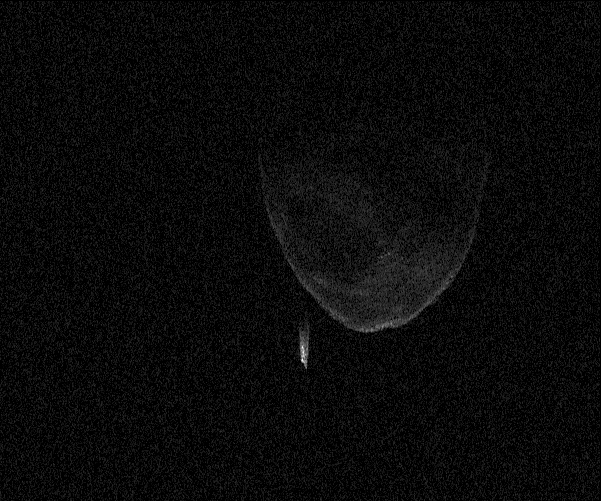Not a record if it is a captured comet (; Halley's Comet density = 0.6 gm/cm3)alter-ego wrote:
Well the new results are in after more radar measurements, and your inclination towards a lower density was correct, but surprisingly, still ~2x too high!
The orbital period and "maximum" radius are listed as 32hr and 6.4km respectively, which sets QE2's density ≤ 1gm/cm3. A fluffy asteroid indeed! I was expecting both a lower density and faster orbital velocity than my original calculations, but it turns out the new velocity is about the same (only 9% faster) which means the density is much lower. If this density is correct, it must be a record holder. (Mathilde density = 1.3gm/cm3)
Congratulations on getting the calculations right even if your density guess was more reasonable for Amor asteroids (i.e., 433 Eros) than for an old comet. However, I simply couldn't jive the occasional 3 pixel Doppler width of the satellite with something that was supposed to rotate ~30 times slower than the primary. Now it is only ~7 times slower than the primary (assuming that it orbits roughly around the equator).


